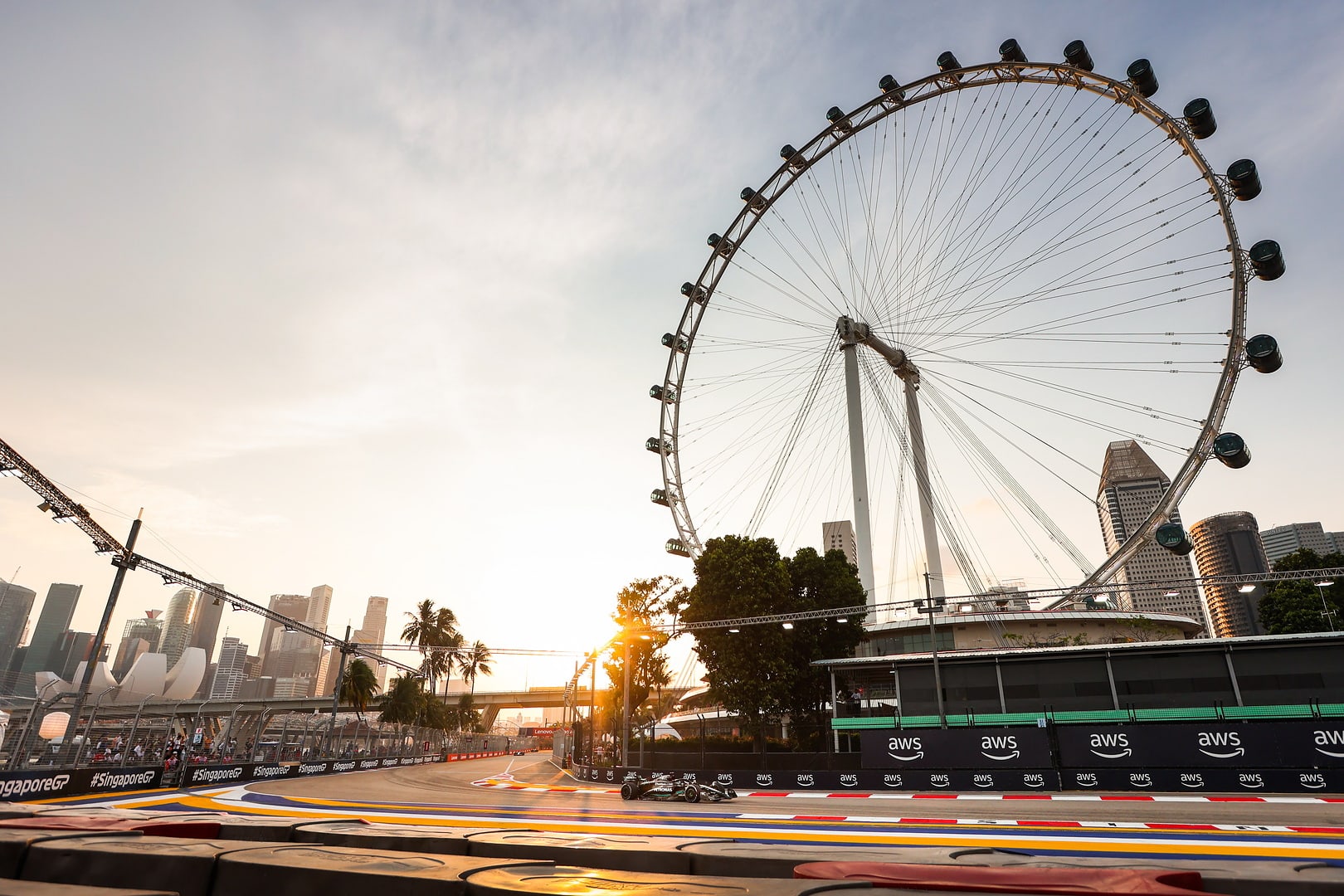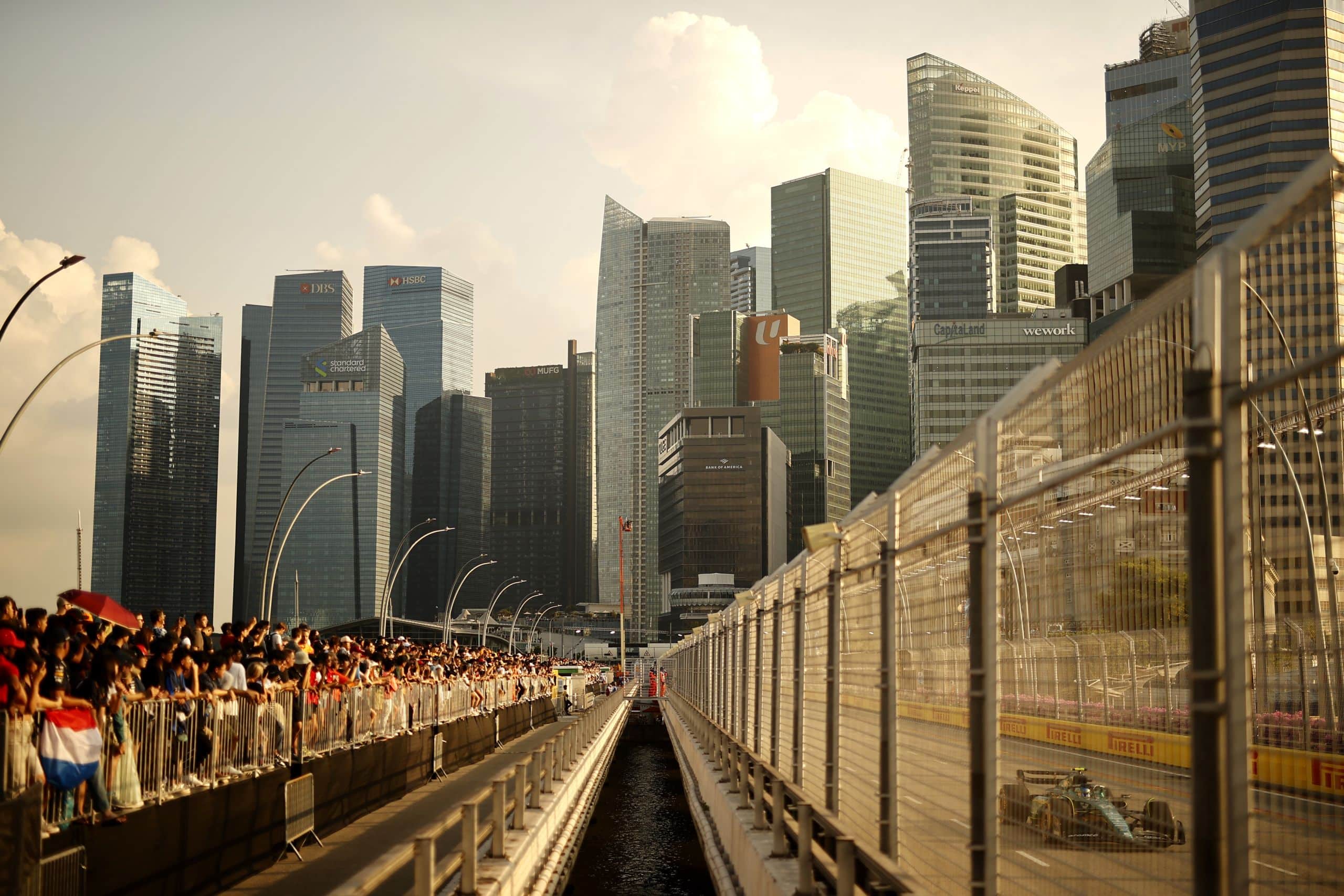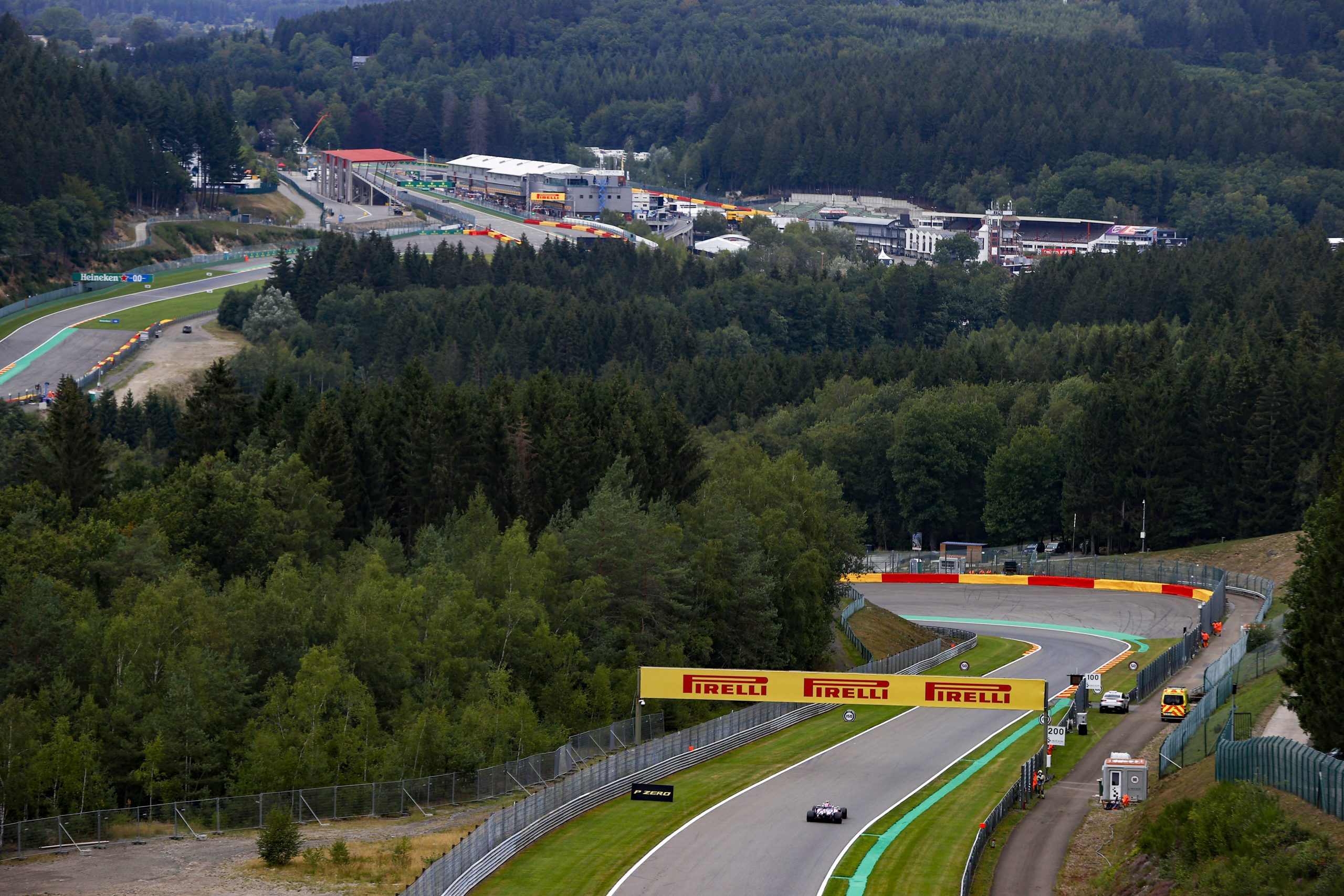Marina Bay Street Circuit
The Marina Bay Street Circuit is a premier racing venue situated in Singapore, renowned for hosting the Singapore Grand Prix, part of the Formula One World Championship. Characterized by its 5.063-kilometer length and a complex set of 23 turns, this street circuit navigates through the city, offering both drivers and spectators a unique and challenging experience. Since its inception, the track has gained acclaim for its high-speed straights and tight corners, deeply integrating itself within the Marina Bay’s urban landscape.
With its design, the circuit encapsulates the essence of a street race while presenting the glitz associated with Formula One events. The proximity of the barriers increases the demand for precision driving, testing the mettle of the world’s finest racers. The combination of the track’s physical demands and Singapore’s humid conditions adds a layer of complexity, elevating the Marina Bay Street Circuit to one of the most grueling races on the calendar.
As the host of Formula One’s first night race, the Marina Bay Street Circuit offers a spectacle of illuminated cityscapes against the competitive night-time action, delivering an electric atmosphere unlike any other race in the championship. The incorporation of existing roads around Marina Bay means the circuit layout has significant variability in surface texture and grip levels, demanding adaptability and strategic acumen from the teams and drivers.

History of the Circuit
The Marina Bay Street Circuit has been an integral part of Formula 1 since its incorporation into the race calendar in 2008. It stands out not only for its scenic harborside setting but also for its unique characteristics that challenge drivers and teams alike.
Origins and Development
In August 2007, construction began on the Marina Bay Street Circuit, with the goal of creating a new, exciting venue for the Formula 1 Singapore Grand Prix. The street circuit was mapped out around Marina Bay, coursing through the Downtown Core and Kallang areas of Singapore. KBR was the architect behind the design which integrated public roads to build a 5.073 km track with 23 demanding turns.
The circuit opened on August 31, 2008, following approximately S$33 million in construction costs. Since its inaugural race, it has undergone several revisions to improve driver safety and race dynamics. Notably, the Singapore Sling chicane was removed in 2013, and re-profiling of turns was executed in 2015 and 2018 to refine the racing line and enhance overtaking opportunities, ultimately reducing the track length to its current 5.063 km.
Major Races and Events
From 2008 to 2019 and resuming in 2022, the Marina Bay Street Circuit has served as the home of the Formula One Singapore Grand Prix. As an FIA Grade 1 circuit, its characteristics have forged memorable challenges, such as managing the tricky pit lane entry or dealing with the physical demands of the street race in humid conditions.
The track has been recognized for its consistent inclusion of safety car deployments, accentuating the unpredictable nature of racing on street circuits. Additionally, several revisions have led to new lap records over the years, with Lewis Hamilton setting the current record of 1:35.867 in 2023 on the revised circuit layout with a new straight between turns 15 and 16.
The Singapore Grand Prix has become a marquee event on the Formula 1 calendar, renowned for its night racing under the bright city lights, and continues to evolve with the most recent track changes aimed at enhancing the racing spectacle.
Circuit Specifications
The Marina Bay Street Circuit is renowned for its unique features within Formula One, including its nocturnal race setting and its blend of custom-built track sections and public roads.
Track Design and Layout
The mastermind behind the original design of the Marina Bay Street Circuit is Hermann Tilke, a noted circuit designer. Significant parts of the circuit have a permanent setup, whilst the remaining sections utilize Singapore’s city streets. This blend creates a setting that is both challenging for drivers and enthralling for spectators.
Circuit Length
The track has seen several modifications since its inception, with the most recent adjustments bringing its total length to approximately 5.065 kilometers. This change in the layout has been in response to driver feedback and to enhance the racing experience.
Turns and Chicanes
The circuit features a complex series of 23 turns, including tight hairpins and high-speed chicanes. A notorious element of the track was the “Singapore Sling” chicane; however, it was replaced by a tighter corner to increase driver satisfaction. Turn 1 is noteworthy for being a tight left-hander that leads into a challenging sequence of early bends, demanding strategic maneuvering from the drivers.
Racing Events
The Marina Bay Street Circuit hosts several racing events, most notably the exhilarating Formula One Singapore Grand Prix. It’s a spectacle with distinct phases, from the nail-biting qualifying rounds to world-renowned night races recognized for their action-packed moments and significant outcomes.
Singapore GP Highlights
The Singapore GP, part of the Formula One World Championship, is known for being the first night race in Formula 1 history. Highlights include the thrilling 2023 race, praised widely and awarded titles such as ‘Best Race’ by international media. Noteworthy performances, such as the victorious drive by Carlos Sainz in 2023, have marked this circuit as one of the most celebrated stages in the Formula One calendar.
Qualifying Rounds
Qualifying at the Marina Bay Street Circuit is a test of driver skill and machinery precision. The bumpy street surface, coupled with the humid Singapore climate, poses a significant challenge. Sessions determine the starting grid for the race, as drivers push for the fastest lap. The intense competition during these rounds sets the tone for the race, with every millisecond mattering in the fight for pole position.
Notable Past Races
The circuit has a history of memorable races, with outcomes that frequently influence the championship standings. Notable past races include Sergio Perez’s outstanding 2022 victory, where he maintained his lead against Charles Leclerc with a time of 2:02:20.238 to win the Grand Prix. Each event at the Marina Bay Street Circuit contributes to the legacy of the venue, ensuring its status as a critical and fan-favorite stop on the F1 circuit.
Visitor Information
Visitors to the Marina Bay Street Circuit can look forward to an electrifying experience with a mix of high-octane racing and entertainment options. Strategically positioned grandstands and facilities ensure an enjoyable and comfortable experience for all attendees.
Seating and Grandstands
- Bay Grandstand: The Bay Grandstand, with its distinctive yellow seats, spans the waterfront section offering a backdrop of the iconic Singapore skyline.
- Spectator Capacity: Seating varies across multiple grandstands, with the Bay Grandstand accommodating a large number of spectators.
- Singapore Flyer: For those looking for a panoramic view, the nearby Singapore Flyer presents an opportunity to witness the race from a unique vantage point.
Facilities and Accessibility
- Food and Beverage: A diverse array of food and beverage options is available, with most stalls accepting card payments, though carrying cash is advisable.
- Transportation: Efficient transportation is provided, with the MRT being a convenient option for moving between Zones 1 and the Padang Stage.
- Accessibility: The circuit offers multiple entry gates with clear signage to facilitate easy movement for spectators.
For the latest updates and live commentary during the race, attendees can tune in to 102FM. Additionally, the best spots to view the post-race fireworks display include the waterfront beside the Esplanade, the Bay Grandstand, and the Helix Bridge. Essential services like ATMs and first aid are readily accessible throughout the circuit premises.
Environmental Conditions
The Marina Bay Street Circuit is characteristically impacted by Singapore’s tropical climate, with races typically exposed to hot and humid conditions that influence both driver performance and vehicle dynamics.
Weather Impact on Racing
The Singapore Grand Prix held at the Marina Bay Street Circuit faces hot and humid weather, which drastically affects the performance and strategies of the teams. Humidity often exceeds 80%, while temperatures can hover around 30°C (86°F), even at night when the race is held.
- Humidity: High humidity levels lead to:
- Reduced engine cooling
- Increased driver fatigue
- Potentially compromised tire performance
- Temperature: Elevated ambient and track temperatures result in:
- Higher thermal degradation of tires
- Necessity for drivers to manage brake and engine temperatures meticulously
Circuit Conditions
The circuit itself presents a unique challenge when paired with Singapore’s weather:
- Track Surface: The bumpy street layout adds an extra layer of difficulty, where the grip level evolves throughout the weekend as more rubber is laid down.
- Barriers: Close proximity to walls leaves little room for error, making it imperative that drivers maintain concentration despite the physically taxing environment.
- Impact on Vehicles: Cars are specifically set up to handle the:
- Stop-start nature of the track
- Quick direction changes
- Handling the thermal stress on brakes and engines due to hot and humid conditions

Economic and Cultural Impact
The Marina Bay Street Circuit, host of the Singapore Grand Prix, boasts significant contributions to Singapore’s economy and cultural landscape.
Impact on Singapore Tourism
The Singapore Grand Prix stands as a cornerstone event for Singapore’s tourism, remarkably driving economic gains. Reports have identified Singapore Airlines as a key partner in enhancing the travel experience for Formula One enthusiasts coming to witness the event. Specifically, the race has brought in approximately S$1.5 billion in tourism receipts since its inception in 2008. The event annually attracts thousands of visitors, who not only enjoy the race but also partake in Singapore’s rich culture and entertainment offerings.
- Accommodation: During race weekends, hotels in proximity to the circuit such as Marina Bay Sands experience high occupancy rates.
- Dining and Entertainment: Visitors often explore local dining establishments and attend entertainment events related to the Grand Prix.
Cultural Significance
The Singapore Street Circuit transcends mere racing; it offers a cultural spectacle melding sport with the city’s character. Spanning the Marina Bay area, the circuit navigates past iconic landmarks such as the Singapore Flyer and the historic Anderson Bridge, showcasing Singapore’s unique blend of modernity and tradition. This integration of the racetrack into the city’s fabric does more than just provide a backdrop; it promotes Singapore’s heritage to a global audience, further solidifying its status as a multifaceted cosmopolitan locale.
Circuit Surroundings and Landmarks
The Marina Bay Street Circuit is as much a spectacle of urban development as it is of high-speed motorsport, integrating distinguished landmarks into the very fabric of the race experience.
Notable Landmarks
- Fullerton Hotel: This historical building stands as a grandiose marker amidst the high-adrenaline race track.
- Singapore Flyer: The large Ferris wheel offers panoramic views and is a distinctive silhouette against the night race’s backdrop.
- Anderson Bridge: One of the circuit’s striking features, serving as a picturesque section of the track where cars zip underneath.
The circuit flows past these iconic structures, allowing spectators to witness the harmony of Singapore’s heritage with modern sporting dynamism.
Urban Integration
Downtown Core and Kallang: These are the planning areas the circuit intertwines with, demonstrating a fluid merge of the race into the city’s daily life.
- Circuit passage through Planning Areas: Area Coverage by the Circuit Downtown Core Turns 4 to 19 Kallang Turns 1 to 3
The circuit’s layout capitalizes on the city’s existing infrastructure, utilizing important thoroughfares such as Benjamin Henry Sheares Bridge, Republic Boulevard, and Nicoll Highway. The bridge, named after Singapore’s second president, is integrated seamlessly into the circuit, symbolizing the coexistence of tradition and modernity.
The race circuit is not just a temporary sporting venue but a showcase of Singapore’s skyline, blending the boundary between urban living and the excitement of Formula One racing.
Marina Bay Street Circuit – Frequently Asked Questions
This section addresses some of the most common inquiries regarding the Marina Bay Street Circuit and the Singapore Grand Prix experience.
Can I visit the Singapore Grand Prix track?
Visitors can walk along certain parts of the Marina Bay Street Circuit when it’s not in use for the Grand Prix. However, during race preparation and on race weekends, access is restricted to ticket holders.
Where is the best place to watch the F1 race in Singapore?
The best place to watch the race often depends on personal preference. Grandstands around the circuit, like the Pit Grandstand, offer a view of the start and finish, while the Bay Grandstand provides a panoramic view of the circuit against the cityscape.
Is Singapore F1 always at night?
Yes, the Singapore Grand Prix is traditionally held at night under artificial lighting, making it the first ever night race in Formula One history.
Where do F1 drivers party in Singapore?
F1 drivers and teams have been known to attend exclusive events and parties at upscale venues in Singapore, such as Amber Lounge or the Podium Lounge, particularly after the race.
Where can I buy Singapore Grand Prix tickets?
Tickets for the Singapore Grand Prix can be purchased through the official Formula 1 website, the Singapore GP’s website, or authorized ticketing partners. It’s advisable to purchase in advance due to high demand.

